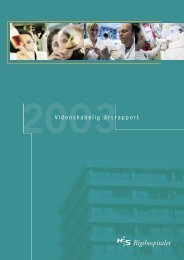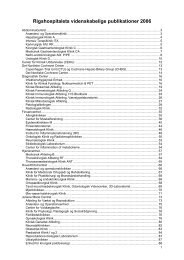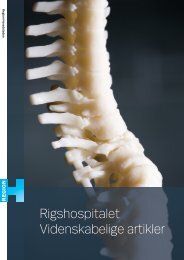View - CTU
View - CTU
View - CTU
You also want an ePaper? Increase the reach of your titles
YUMPU automatically turns print PDFs into web optimized ePapers that Google loves.
iquency<br />
;urance register containing<br />
er of tooth extractions had<br />
he number of root fillings<br />
veil documented that the<br />
1r 2004) and it is assumed<br />
ine in the number of tooth<br />
:>le has changed over the<br />
us and the use of dental<br />
althier people will demand<br />
eview also presented an<br />
:I to a greater demand for<br />
eople to demand a higher<br />
:ersen & Holst 1995), and<br />
tersen et al. 2004 ). The<br />
has been available for 25<br />
1out specific data on tooth<br />
reatments per number of<br />
I numbers.<br />
iars can be understood as<br />
1e number of root canals<br />
1e reduced extraction rate<br />
·eased treatment of multi<br />
. The molars were also the<br />
.he tooth type of their last<br />
'indings were observed by<br />
iiological data. The bulk of<br />
endodontic treatment was<br />
Study I).<br />
These time trends were confirmed by a recent 20-year radiographic re-examination of<br />
a population in Sweden (Eckerbom et al. 2007), showing an increase in root canals<br />
treated with increasing age and an overall increase in the number of root fillings.<br />
They concluded that there is still a great need for endodontic treatment because the<br />
frequency of teeth with apical periodontitis had also increased during the period.<br />
Reasons for root canal treatment<br />
The questionnaire survey among randomly selected GDPs (Study II) provided some<br />
evidence that caries is still the main reason for root canal treatment. In the present<br />
study the mailed questionnaire was accompanied by a letter guaranteeing<br />
confidentiality including a coded and stamped reply envelope. Non-responders Vi.Cere<br />
first approached by a reminder card and finally by a telephone call (Tan & Burke<br />
1997). The use of coded reply envelopes led to a failure to respond by at least 1. 7%<br />
of the GDPs. Ten practitioners questioned the anonymity (in spite of coded return<br />
envelopes) and did not want to take part in the study. The final response proportion<br />
(75.3%) was regarded as sufficient to make valid conclusions (Parashos & Messer<br />
2004). A survey (Madarati et al. 2008) was recently performed amongst endodontists<br />
and GDPs in the United Kingdom with a similar sample size (n = 476) and response<br />
proportion (75% ). They concluded that such a response proportion should be<br />
considered to be representative of all dental practitioners in the United Kingdom. In<br />
that survey the nonresponse bias was assessed between early responders and late<br />
responders. However, such an analysis was not carried out in Study II because the<br />
number of late responders was very low (








